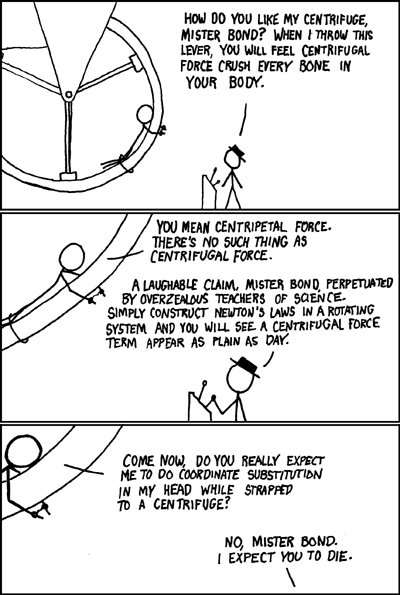TOG
Member
- Jul 9, 2013
- 4,169
- 793
how about those living sideways and at other peculiar angles and centrifugal force etc - twinc
I'm not a physicist, so I can't explain it to you in detail, but I do have an elementary understanding of gravity. This will probably go over your head anyway, so the details don't matter. Any object that has mass has gravity. The more the mass, the more gravity the object has. Although it's not an exactly precise scientific explanation, you can think of gravity as a force that draws other objects to the object in question. For example, if you hold a ball at shoulder height and let go of it, the earth's gravity will pull the ball toward the earth's center.
When you have two (or more) forces acting upon the same object, what that object will do depends on which force is stronger, and on the relative directions of the forces, that is, whether the two forces are working in the same direction, in opposite directions, or at some angle in between. As long as the gravitational force is stronger than the centrifugal force, people will not go flying off into space.
The TOG








